More is more: Mastering the art of pattern drenching
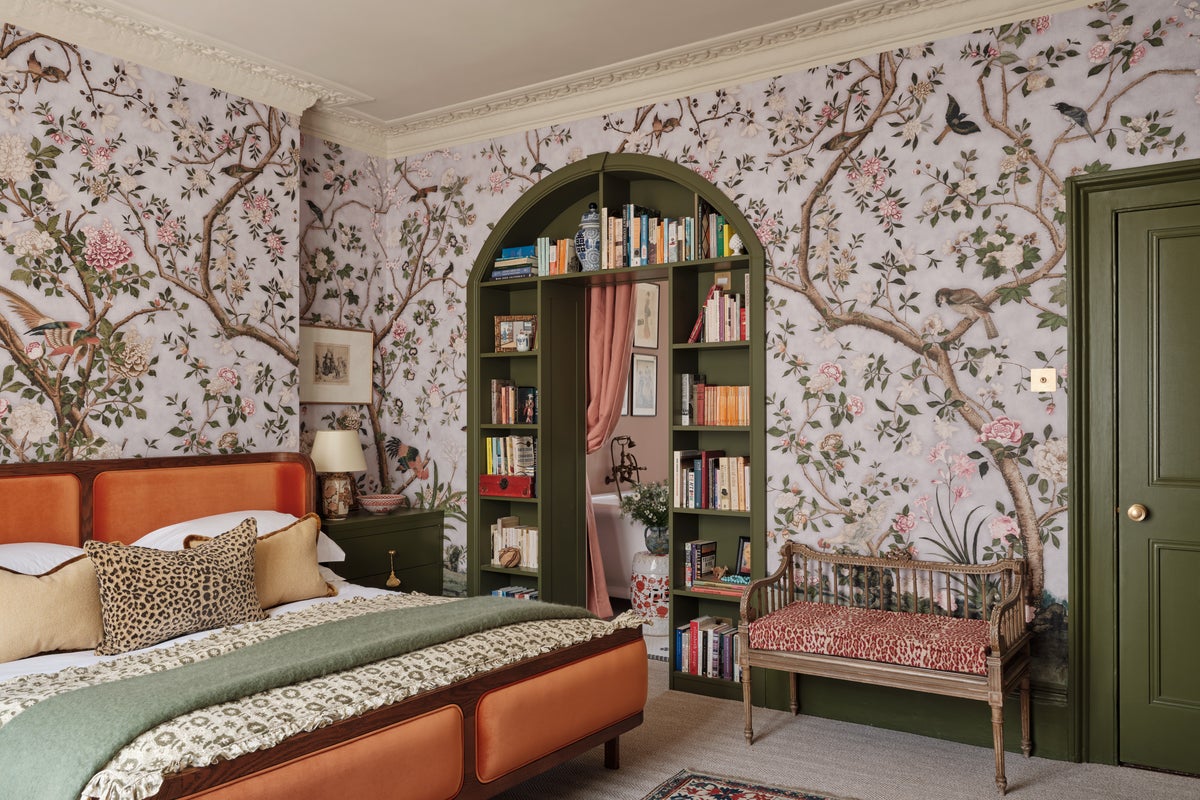
Stripes, gingham, and chintz have been having a moment for some time now – proof that people are craving interiors that feel joyful and expressive. But while patterned spaces are undeniably mood-boosting, combining multiple motifs in one room is no small feat. There’s a fine line between eclectic elegance and visual chaos – between a room that sings and one that simply shouts.
Enter pattern drenching: the bold, maximalist approach to interior design that embraces the layering of prints across every surface. Think florals with animal prints, and antique tapestries next to candy stripes, all united through a carefully considered palette. Though rooted in excess, pattern drenching – when done right – feels harmonised, not hectic.

We spoke with top interior designers and pattern specialists renowned for their vibrant aesthetics, uncovering how they balance boldness with cohesion. From practical tips to inspired visual cues and expert insights, we decode how to master the rule-breaking rhythm of pattern-rich interiors.
A masterclass in maximalism
A striking example of this fearless approach is Martin Brudnizki’s interiors for Hotel Le Grand Mazarin in Paris, where a whimsical Wes Anderson-meets-Alice in Wonderland atmosphere unfolds. Here, canopy beds draped in art de lys tapestries, whimsical paisley-and-lobster wallpaper tucked inside antique wardrobes, striped and chevron sofas, and oriental rugs all coexist in effortless, elegant harmony.
Despite the exuberant mix of prints, the space is unified by a painterly, well-calibrated palette. Pistachio greens and soft corals sweep across walls and seating, punctuated by accents of lavender, golden ochre, and dusky rose. Murano glass chandeliers, tasselled lamps, and flea-market antiques layer in texture and narrative, weaving a story that feels as theatrical as it is lived in.

The result is flamboyant but cosy, opulent yet grounded – proving that while pattern drenching may appear spontaneous and free-spirited, the designers who do it best approach it with thoughtfulness and restraint.
Balancing boldness and breathing room
To channel this, interior designer Rebecca Hughes explains, success lies in control: “The key is sticking to a cohesive colour palette, varying your pattern scales, and allowing space for the eye to rest. Think large florals next to fine stripes, grounded by solid expanses of colour. Layering patterns with purpose can create movement and rhythm, turning an otherwise simple space into something characterful and dynamic.”
Hughes is quick to note that maximalism doesn’t mean excess for its own sake. “As with all patterns, restraint matters,” she says. “Let prints breathe by pairing them with solids or simpler elements. That’s what keeps the look fresh rather than fussy – and ensures the pattern has real impact.”
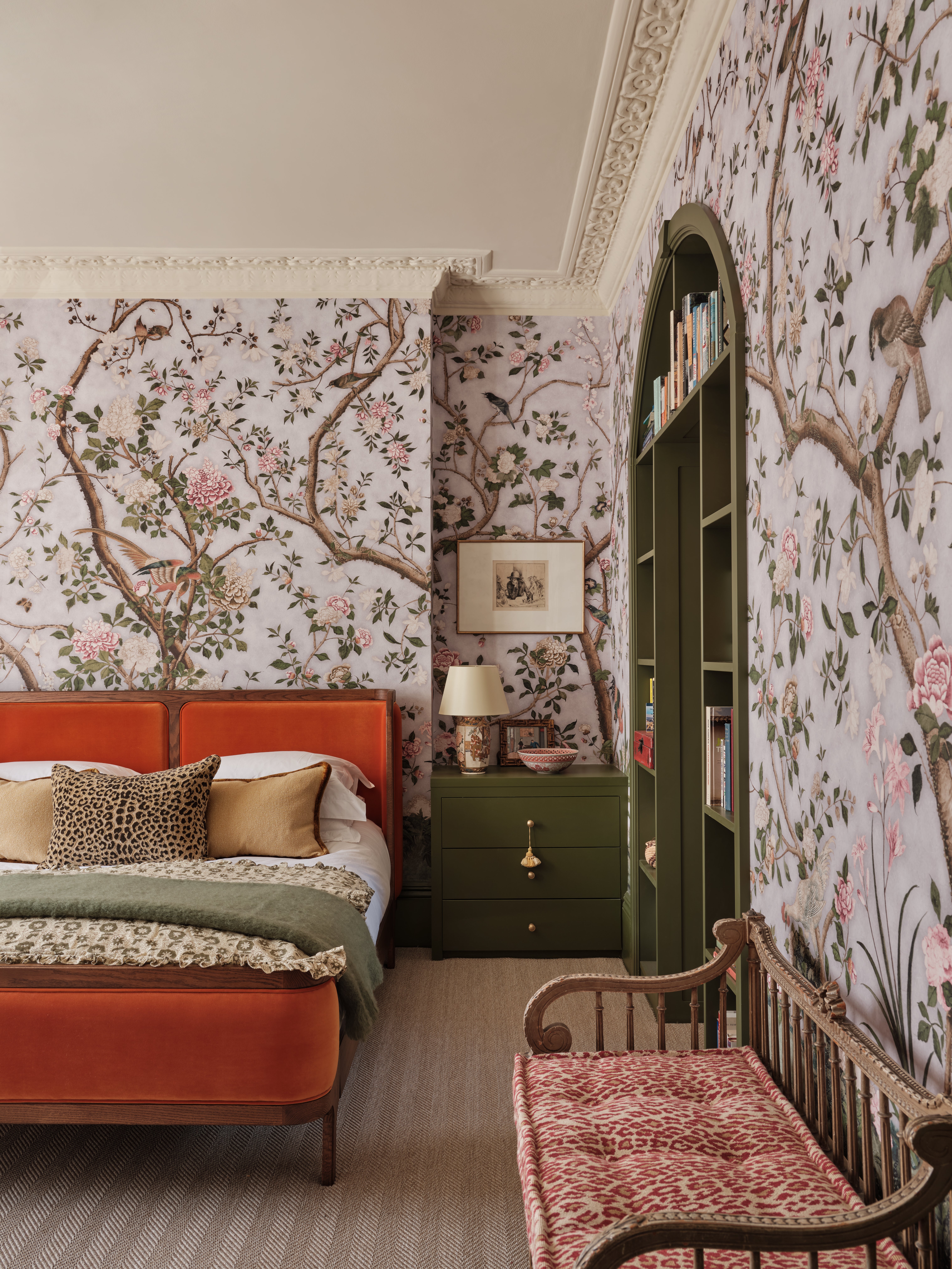
David Harris, design director of fabric and wallpaper house, Andrew Martin, echoes the need for thoughtful contrast over chaos. He suggests that successful pattern drenching hinges on a sense of visual grounding. “A large geometric print can sit beautifully alongside a delicate floral – so long as there’s a shared hue to tie them together,” he says. “Solid tones act like punctuation, giving the eye a place to rest and preventing overwhelm.”
For Harris, living rooms and bedrooms are ideal spaces to embrace this approach. “Layering patterns across walls, upholstery, and soft furnishings creates a rich, cohesive atmosphere,” he explains. “In open-plan layouts, patterns can even help define distinct zones – like a bold rug anchoring a seating area or a statement wallpaper wrapping around a dining nook.”
But he cautions against letting enthusiasm overtake intention. “Too many clashing prints without a common thread – whether it’s colour, motif, or texture – can feel messy rather than curated,” he warns. “And don’t forget about scale. If every element competes for attention, the space loses its sense of balance.”
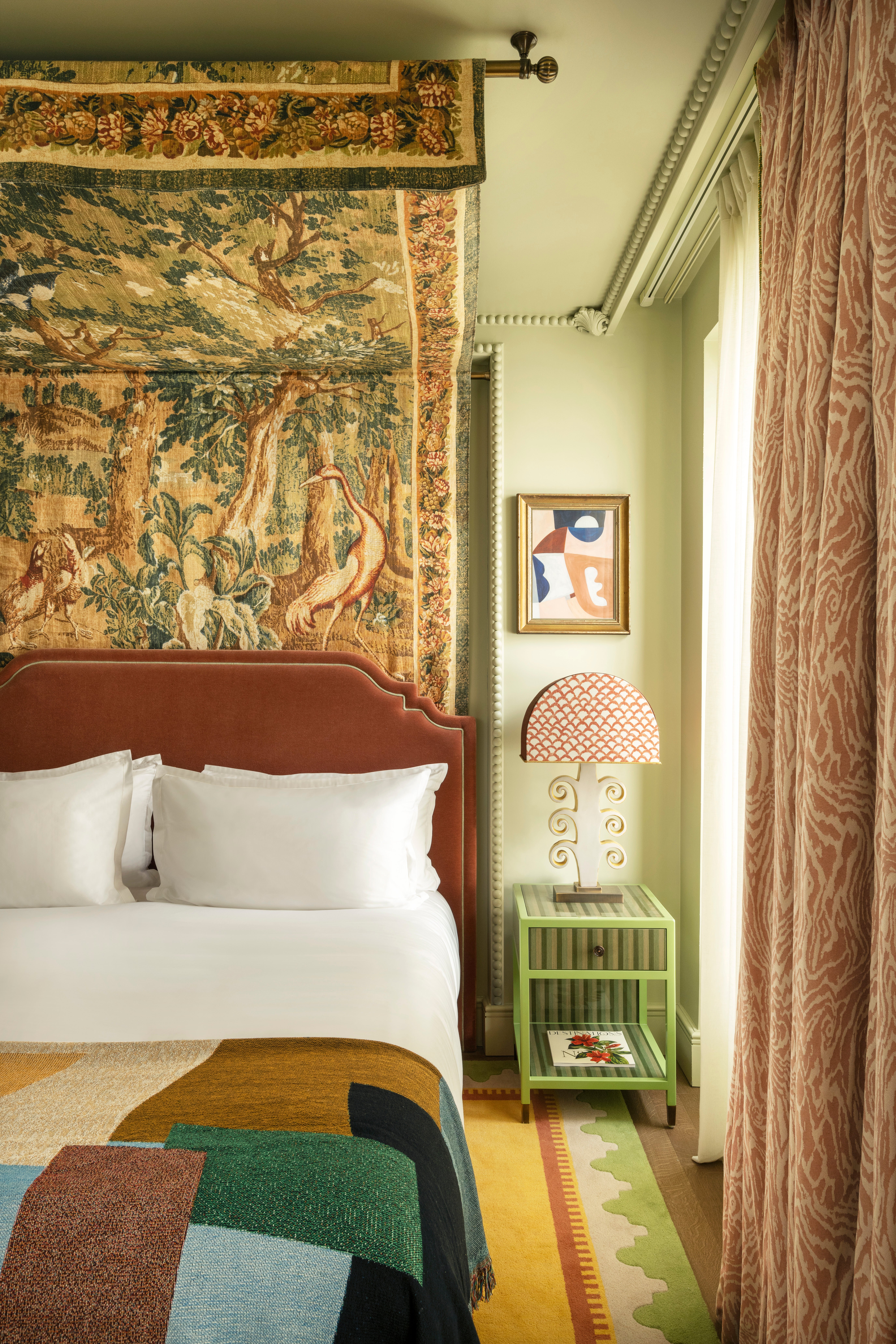
Go by feeling – not formula
While Harris and Hughes take a more structured view, others see maximalism as a creative instinct. For Stefano Seletti, artistic director of Italian cult homeware brand Seletti, the magic lies in confidence rather than calculation.
“Pattern drenching works best when it feels natural – not overly thought through,” he says. “It’s not about uniformity, but conviction. When florals, animal prints and polka dots are chosen with the same boldness, they begin to speak the same language – expressive and full of personality.”
He recommends beginning with one standout design and building the rest of the scheme around it. “Start with a pattern you love – it’s like casting the lead role in a film,” he suggests. “Then use scale and contrast to add drama. A bold, oversized print can be balanced with something more intricate. And don’t be afraid of clashing – often it’s the unexpected pairings that make a space memorable.”
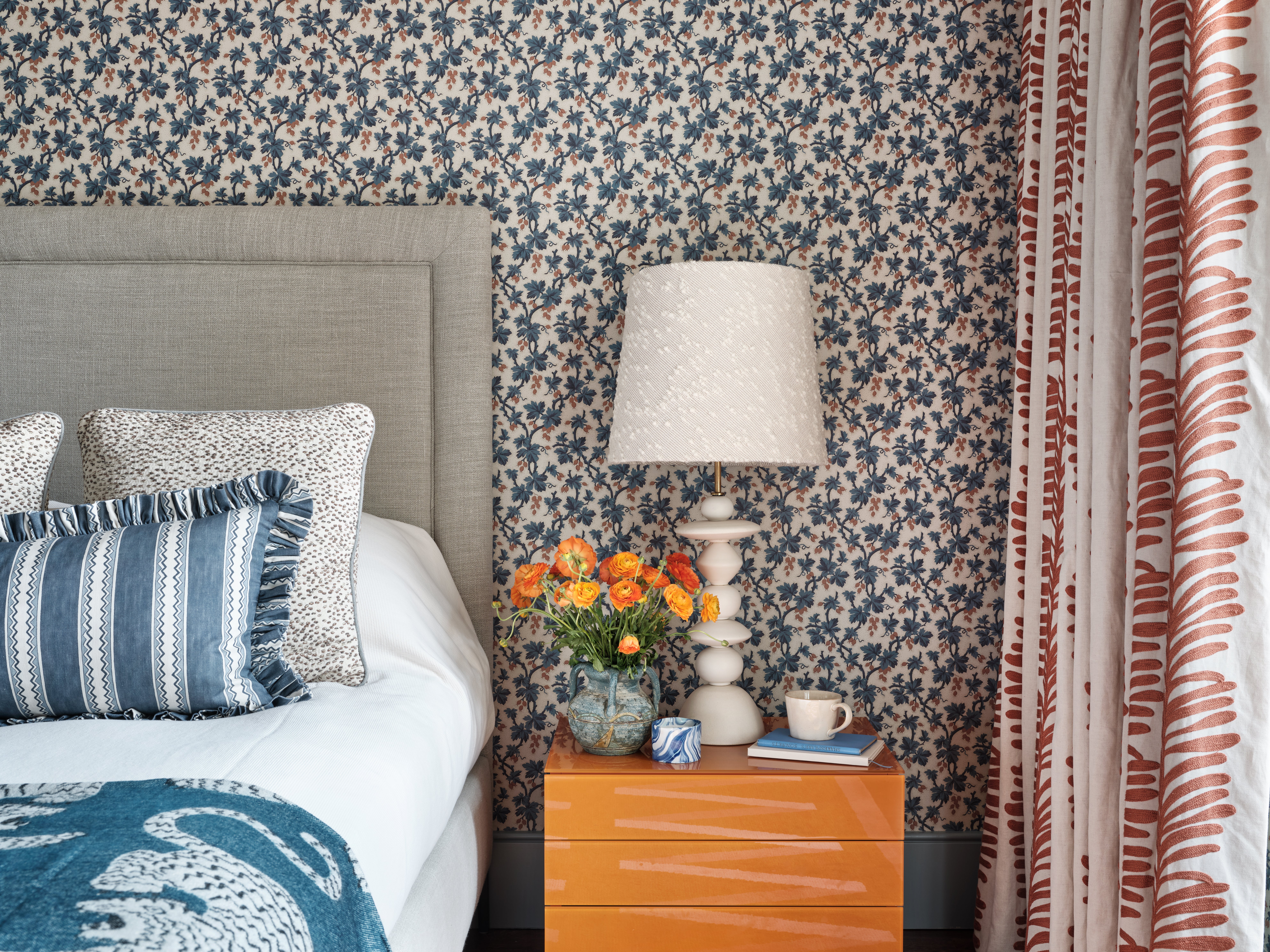
Begin with the base
Not sure where to begin? Lizzie Mosley, creative director at Hug Rug, suggests starting from the ground up – quite literally. “A rug is one of the most effective places to begin,” she explains.
“It grounds the room both visually and physically, while offering a ready-made colour palette. Pick out one or two dominant tones and repeat them elsewhere – in cushions, curtains or art – to create harmony.”
In the bedroom, bedding is an equally powerful foundation. Jessica Hanley, founder of Piglet in Bed, is a firm believer in bold layering – provided the palette stays considered. “The key is sticking to a complementary colour story, so everything feels cohesive,” she says. “It doesn’t have to match exactly – it’s more about a shared tone or mood. Soft, nature-inspired shades like playful blues, gentle greens and blush pinks always sit comfortably together.”
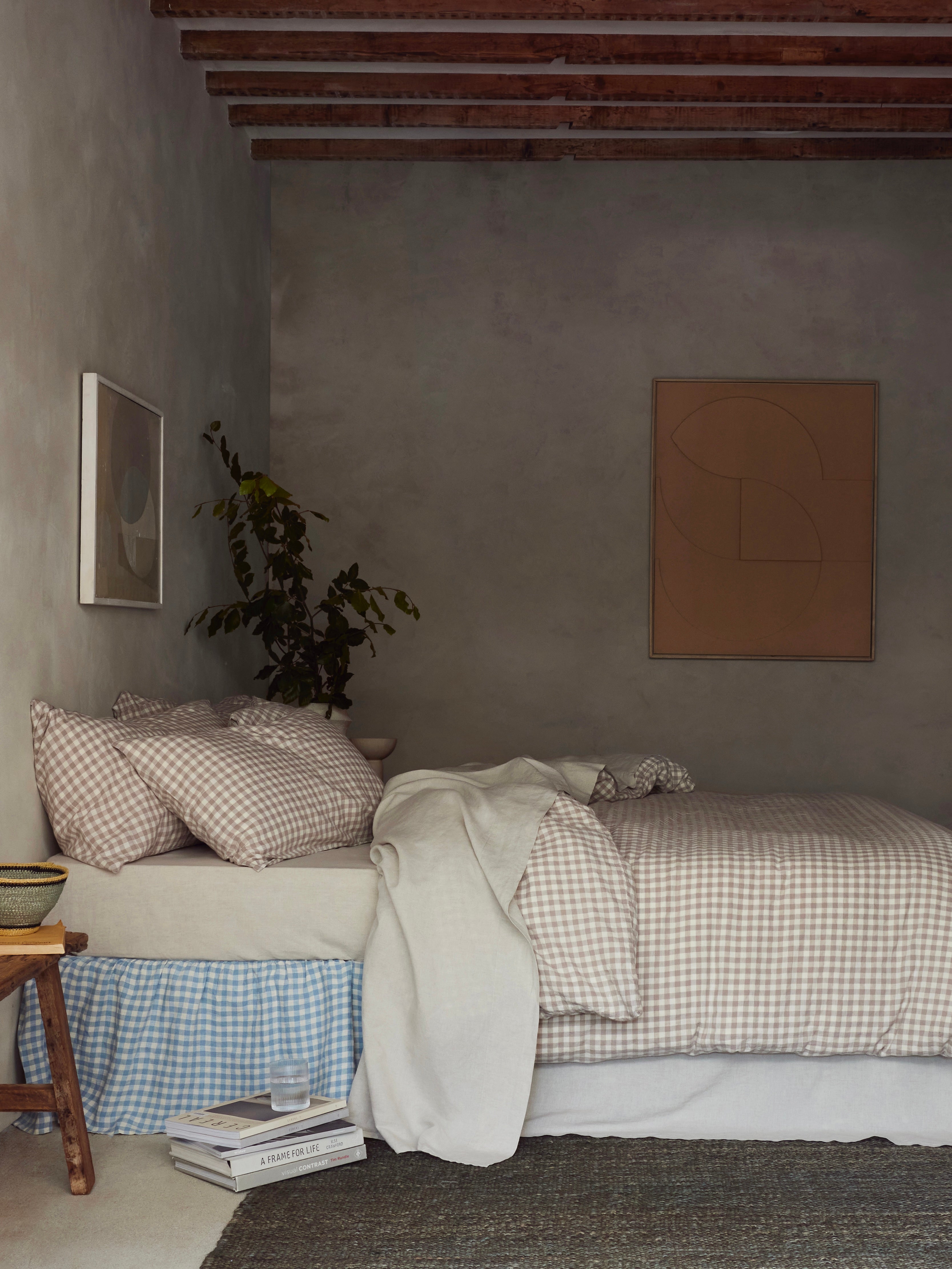
Piglet in Bed’s patterned linen collections are designed with this flexibility in mind, encouraging customers to explore and combine with confidence. But for Hanley, success lies not just in colour, but in scale.
“Pairing a ditsy floral with a narrow gingham or wide stripe creates contrast without overwhelming the space,” she says. Ultimately, successful pattern drenching isn’t about rigid rules – it’s about creating a space that feels personal and full of life.
“Above all, it should feel effortless. If a room looks curated but lived in – not overly styled – then you’ve got the balance right,” concludes Hanley. So, mix boldly, edit gently, and trust your own eye.
[title_words_as_hashtags



